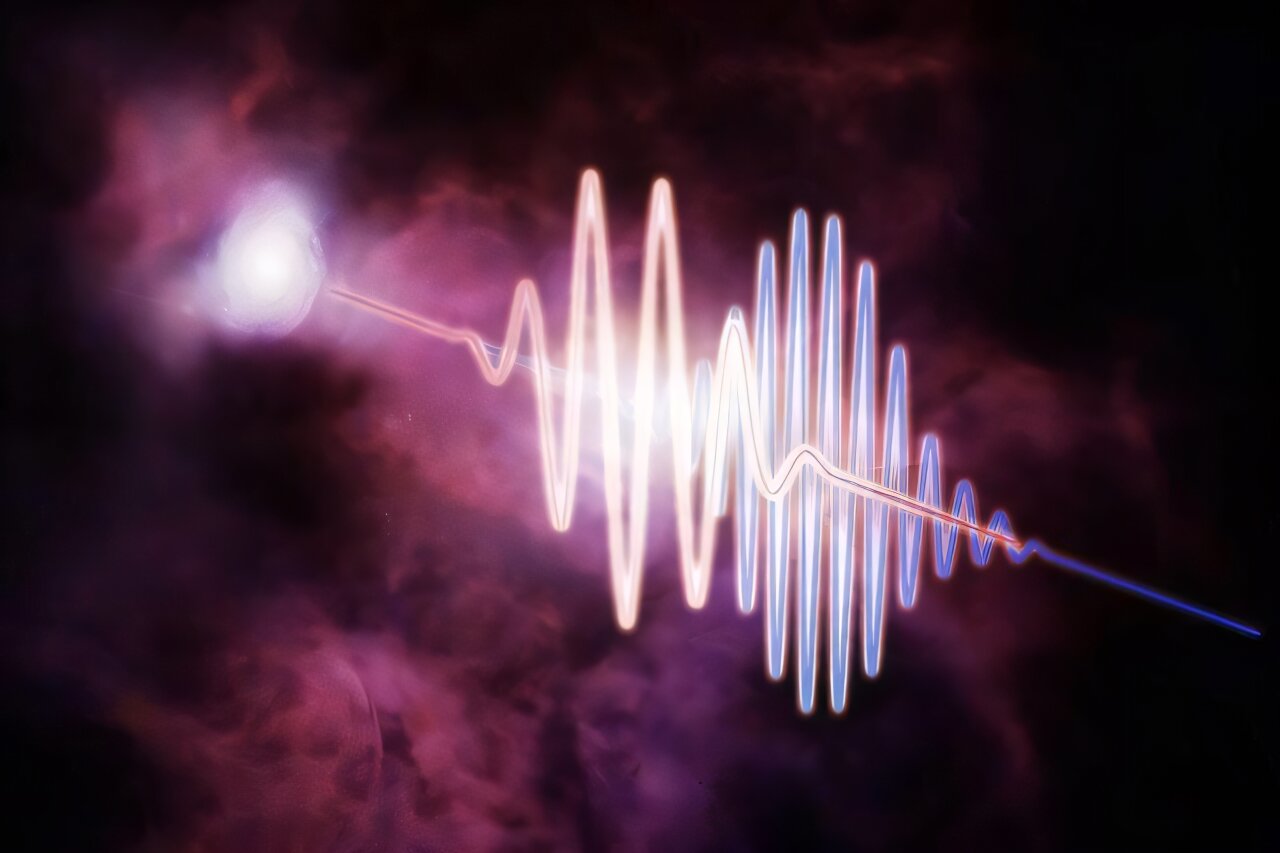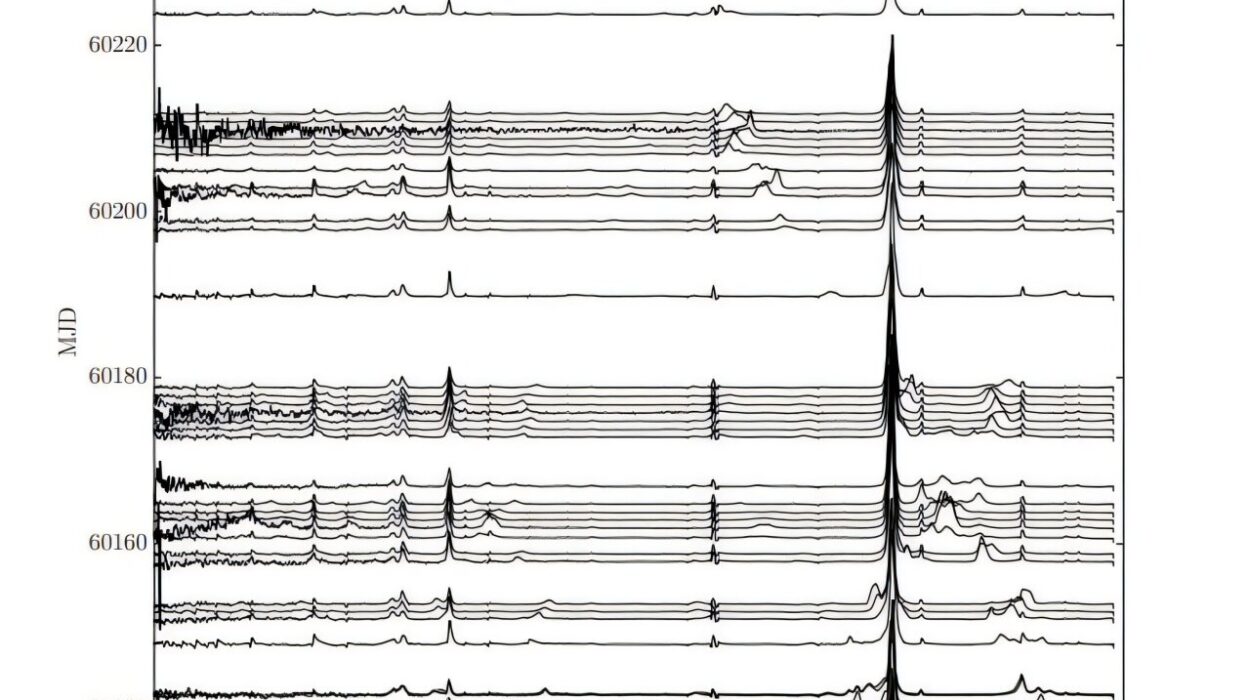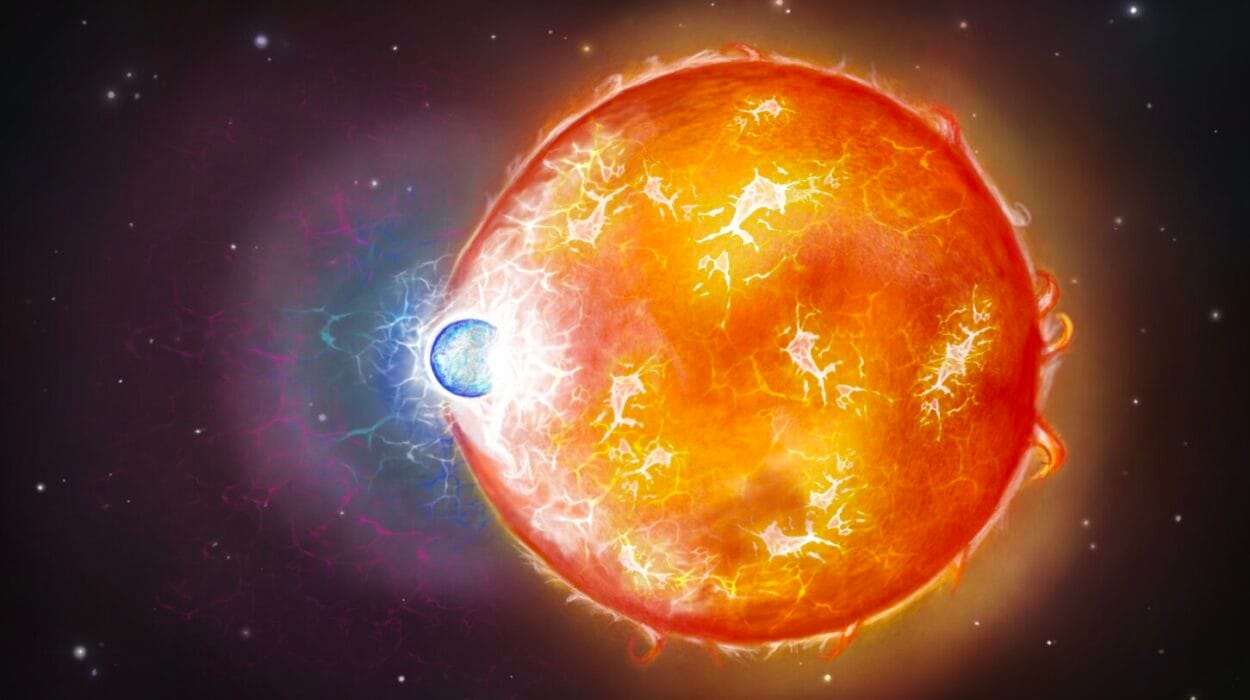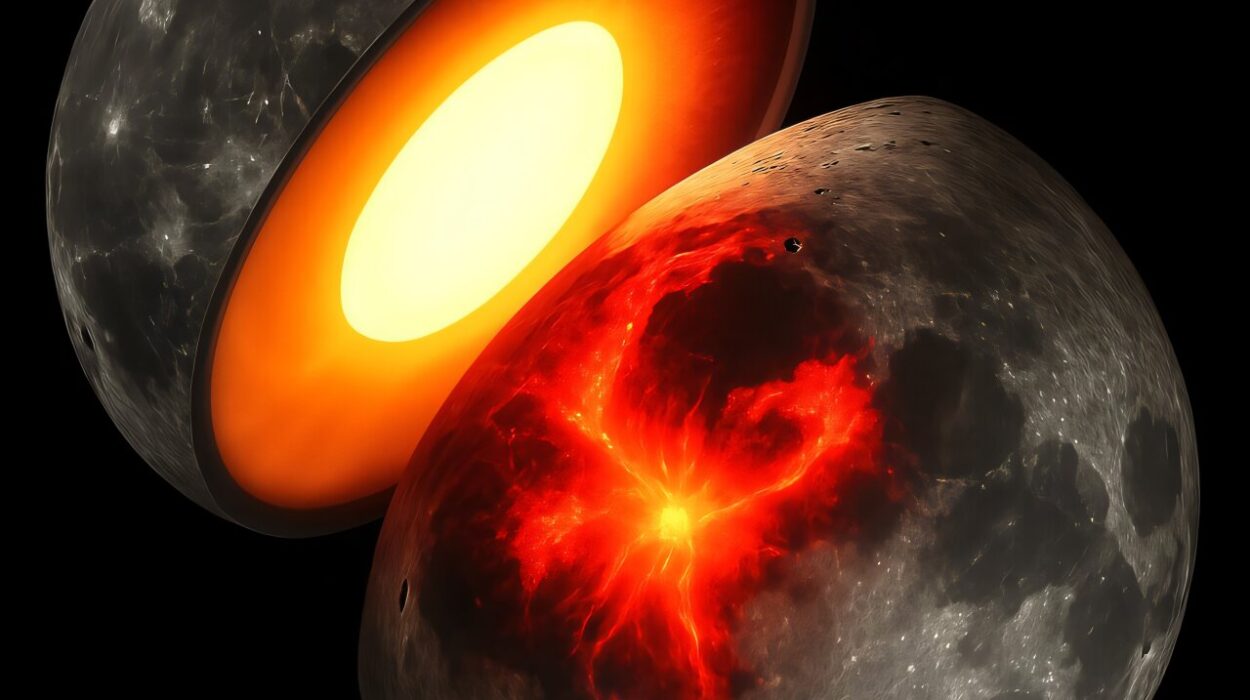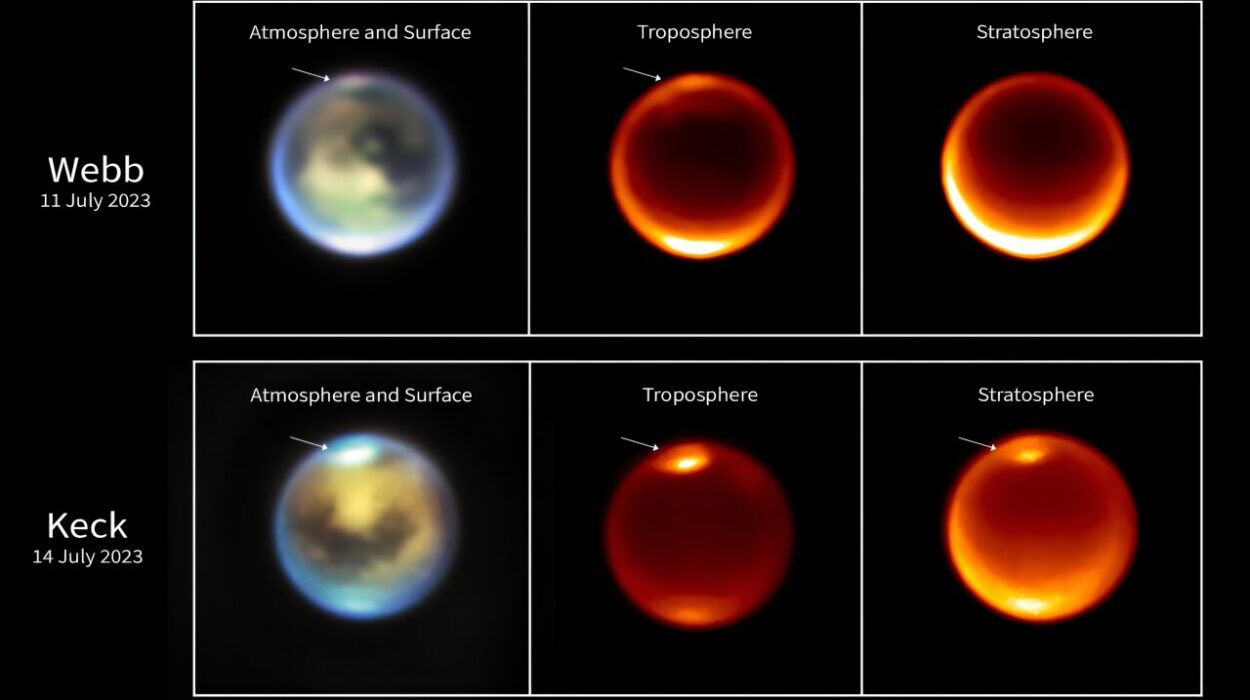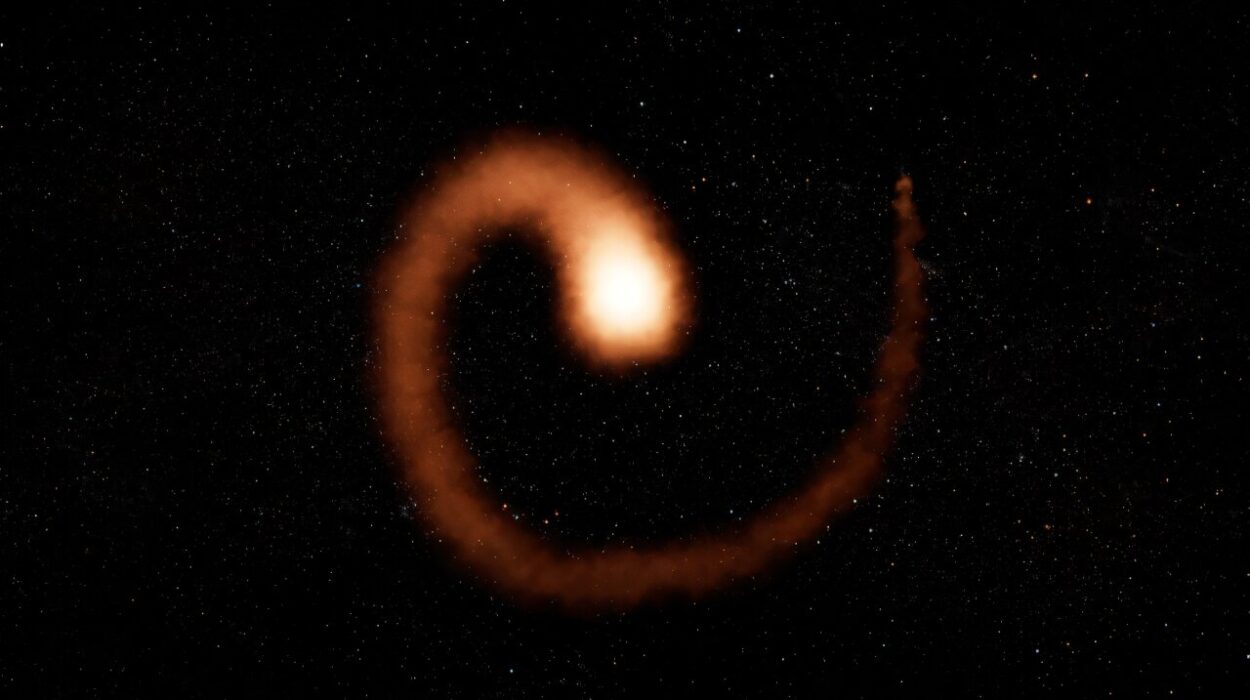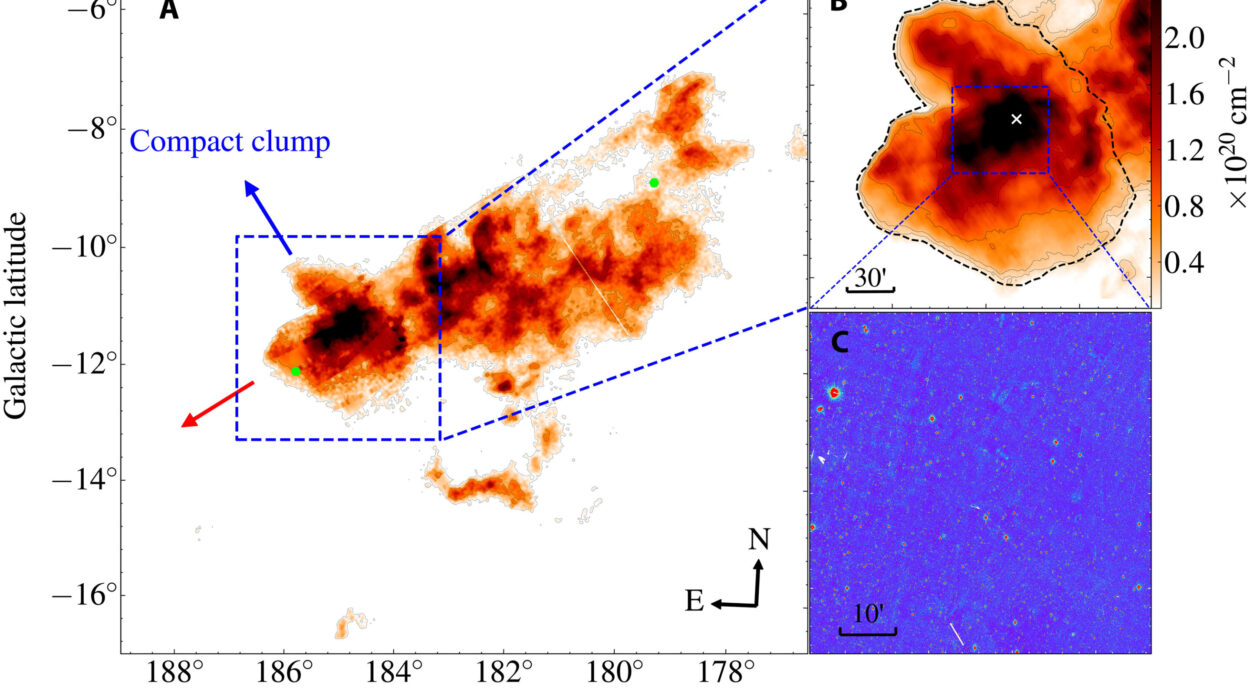For more than twenty years, astronomers have puzzled over a strange cosmic riddle. The laws of physics said there had to be more matter—normal matter, the kind that makes up stars, planets, and people—than we could see. They weren’t looking for dark matter or exotic particles, just the plain old protons and neutrons that should have been out there somewhere. And yet, half of it was missing.
Now, thanks to a new study published in Nature Astronomy, we finally know where it’s been hiding: stretched thin across the great, dark nothingness between galaxies.
Using one of the most enigmatic signals in the universe—fast radio bursts (FRBs)—astronomers at the Center for Astrophysics | Harvard & Smithsonian and Caltech have confirmed that more than three-quarters of the universe’s ordinary matter lies not in stars or galaxies, but in the wispy intergalactic medium (IGM), a cosmic fog that had previously eluded precise measurement.
It’s not just a triumphant moment in cosmic accounting. It’s the dawn of a new era in mapping the structure of the universe.
The Ghostly Matter That Was Always There
The mystery didn’t lie in whether this matter existed. Cosmological models had predicted its presence for years. But the problem was visibility. The universe’s missing matter didn’t shine, didn’t glow in X-rays or twinkle in ultraviolet. It drifted through space in hot, low-density filaments, slipping silently between galaxies. For decades, astronomers had only seen shadows—subtle hints that something was there, distorting light and tugging on gravity.
That changed when scientists began studying fast radio bursts—millisecond-long flashes of radio waves that zip across space from distant galaxies. FRBs are among the universe’s most fleeting and powerful phenomena. And in them, researchers saw a new kind of cosmic flashlight.
“The decades-old ‘missing baryon problem’ was never about whether the matter existed,” said Dr. Liam Connor, an astronomer at the Center for Astrophysics and lead author of the new study. “It was always: Where is it? Now, thanks to FRBs, we know: three-quarters of it is floating between galaxies in the cosmic web.”
In other words, astronomers have found the address of the universe’s long-lost matter—and it’s right there in the void.
Illuminating the Cosmic Fog
To reach this conclusion, Connor and his team analyzed 60 fast radio bursts collected from galaxies ranging from 12 million to over 9 billion light-years away. Among them was FRB 20230521B—the most distant FRB ever detected, and the record-holder for traveling through the largest known stretch of intergalactic space.
As each FRB passes through the cosmos, it encounters gas and dust that slightly slows and spreads its signal. The farther the signal travels—and the more matter it traverses—the more delay it experiences. By precisely measuring that delay, scientists can estimate how much material the signal passed through.
“FRBs act like cosmic flashlights,” Connor explained. “They shine through the fog of the intergalactic medium, and by precisely measuring how the light slows down, we can weigh that fog—even when it’s too faint to see.”
The analysis revealed a striking picture: roughly 76% of the universe’s ordinary matter is spread thin in the IGM. About 15% lingers in galaxy halos—massive clouds surrounding galaxies—and only a small fraction is locked up in stars or cold galactic gas. These proportions align closely with the best cosmological models to date. But for the first time, they’ve been observed and confirmed, not just simulated.
A Radio Revolution in Cosmology
“This is a triumph of modern astronomy,” said Dr. Vikram Ravi, a co-author on the study and assistant professor of astronomy at Caltech. “We’re beginning to see the universe’s structure and composition in a whole new light, thanks to FRBs. These brief flashes allow us to trace the otherwise invisible matter that fills the vast spaces between galaxies.”
The discovery is more than a cosmic scavenger hunt completed—it’s a major validation of how scientists believe the universe evolves.
Galaxies form when baryonic matter falls into gravitational wells created by dark matter. But that infalling matter doesn’t just stay there. Star formation, supernova explosions, and the outflows from supermassive black holes can blow gas back out into the IGM, regulating galaxy growth like a thermostat. Too hot, and matter is expelled. Too cold, and it condenses again.
“Our results show this feedback must be efficient,” Connor noted. “It’s blasting gas out of galaxies and into the IGM, keeping things balanced.”
The data not only confirms the existence of this ejected matter—it gives us a window into how galaxy formation and feedback really work.
A Map Written in Milliseconds
What makes this achievement all the more stunning is the scale and precision involved. The FRBs used in the study came from both relatively nearby galaxies like M81 (host of FRB20200120E, just 11.74 million light-years away) and ancient star systems that existed when the universe was less than five billion years old.
This enormous range allowed researchers to measure the baryonic content across vast swaths of the universe’s history, effectively creating a 3D map of ordinary matter woven into the cosmic web. Each FRB was like a radar ping, tracing a different path through the fog and revealing where the matter lay hidden.
This is the first time ordinary matter has been directly mapped across so much of cosmic time, providing an unprecedented look into the large-scale structure of the universe.
Looking Ahead: Thousands of FRBs, Millions of Clues
The current study, though groundbreaking, is only the beginning. New instruments like Caltech’s Deep Synoptic Array-2000 (DSA-2000) and Canada’s CHORD telescope (Canadian Hydrogen Observatory and Radio-transient Detector) are poised to detect thousands—if not tens of thousands—of FRBs in the coming years.
With each new signal, scientists will be able to refine their measurements, chart the IGM with greater precision, and uncover new patterns in how matter clumps and disperses across space.
“We’re entering a golden age,” Ravi said. “With the next generation of radio telescopes, we’ll be able to map the cosmic web in exquisite detail. Every FRB gives us a new data point, a new thread in the universe’s great tapestry.”
And with those threads, astronomers will continue to unravel the deepest mysteries of the cosmos: how galaxies grow, how matter flows, and how light travels across an ever-expanding universe.
The Missing Has Been Found
In a sense, the universe hasn’t changed. The missing matter was always there, waiting patiently in the darkness between stars. What’s changed is us—our tools, our techniques, our questions.
It took the discovery of a new kind of cosmic signal—a brief, blazing burst from billions of light-years away—to finally illuminate what had been hiding in plain sight.
Now, with the help of FRBs, we’re no longer looking into the void. We’re reading its story, one flash at a time.
Reference: Liam Connor et al, A gas-rich cosmic web revealed by the partitioning of the missing baryons, Nature Astronomy (2025). DOI: 10.1038/s41550-025-02566-y
